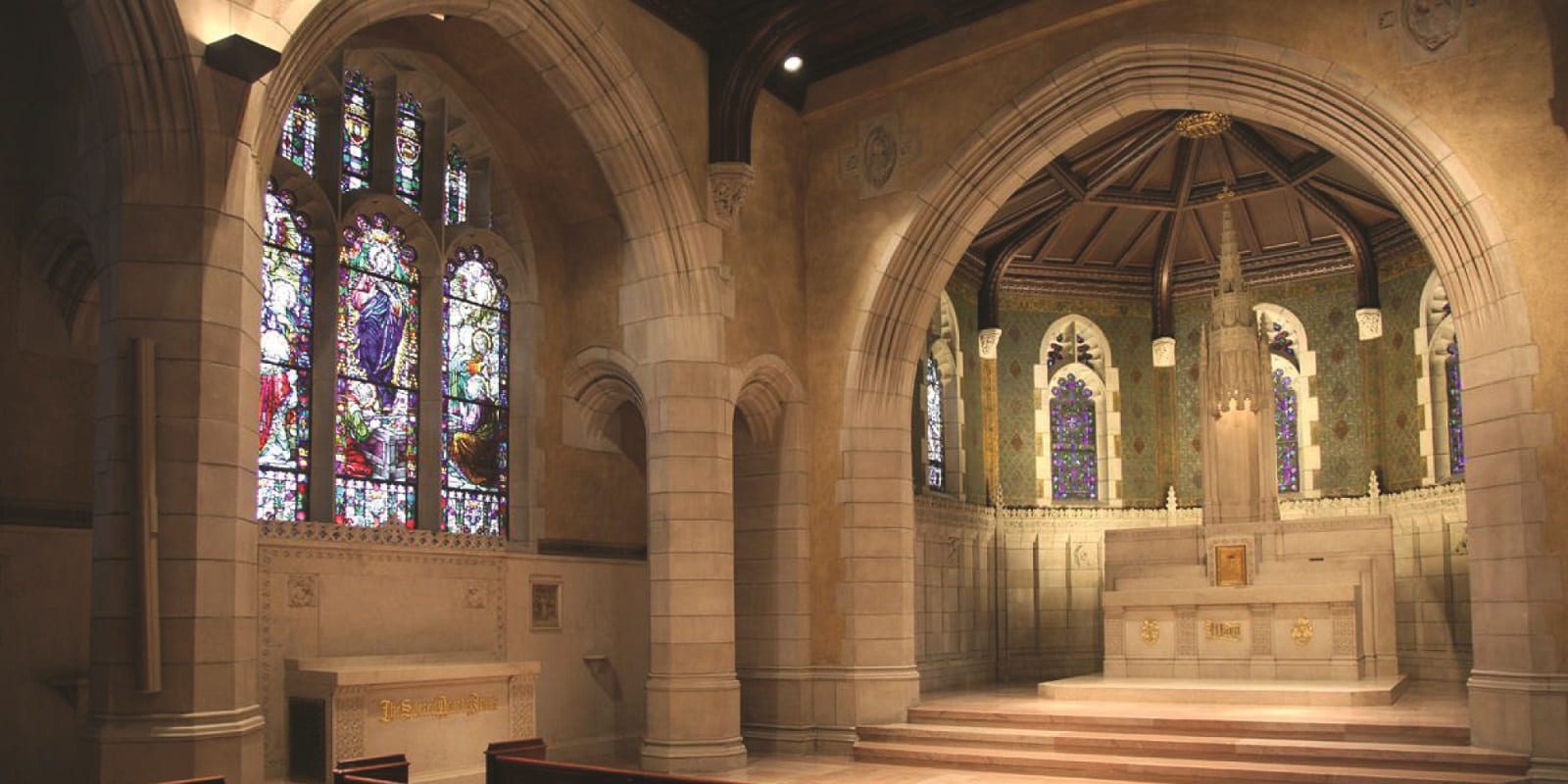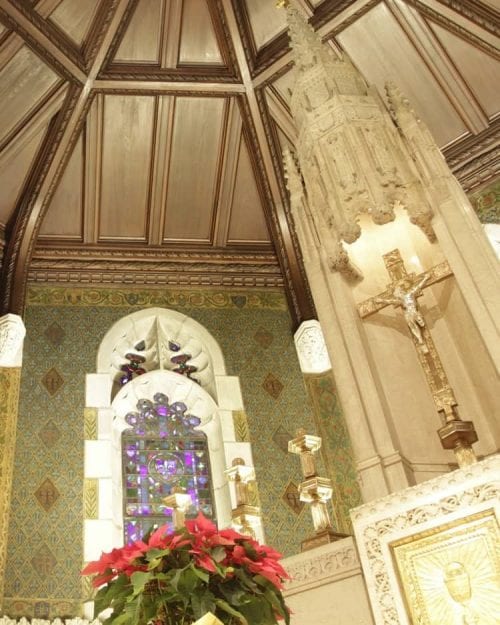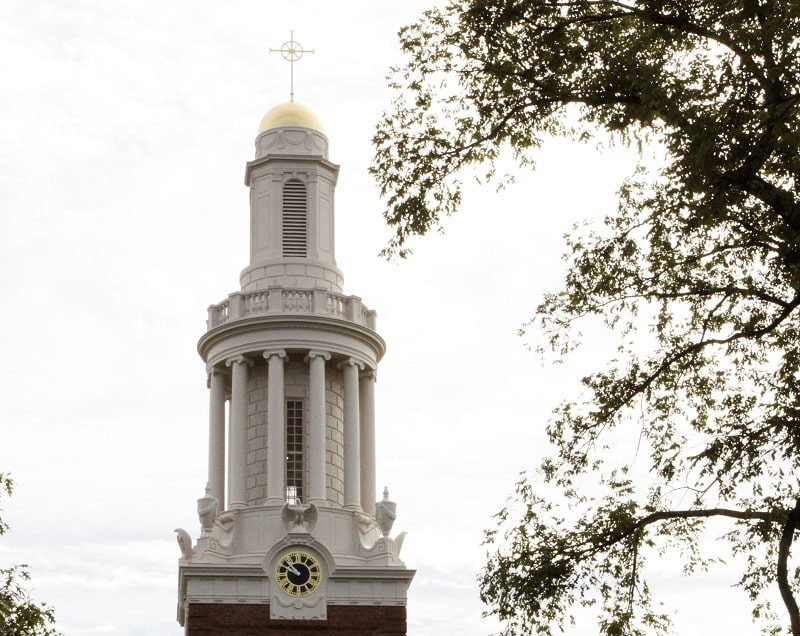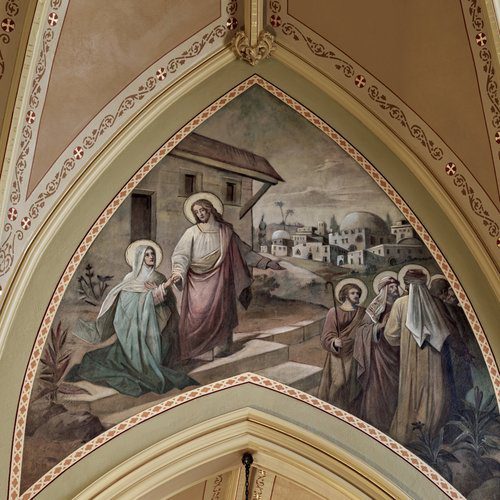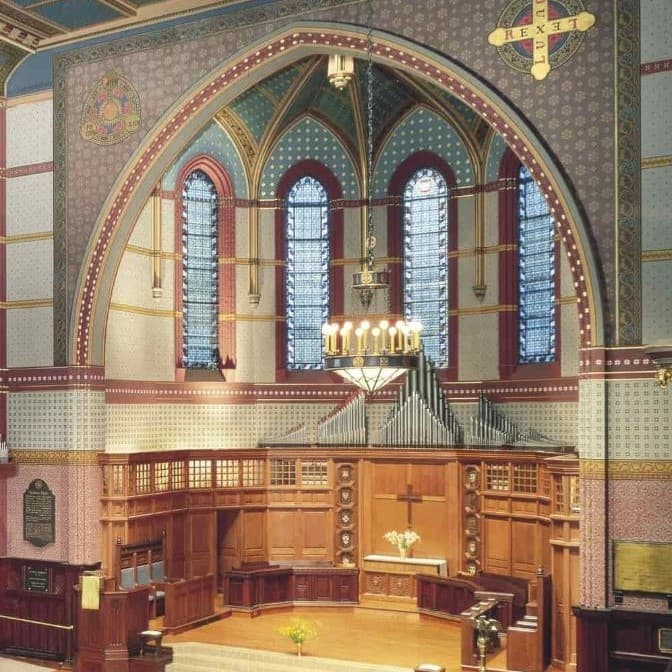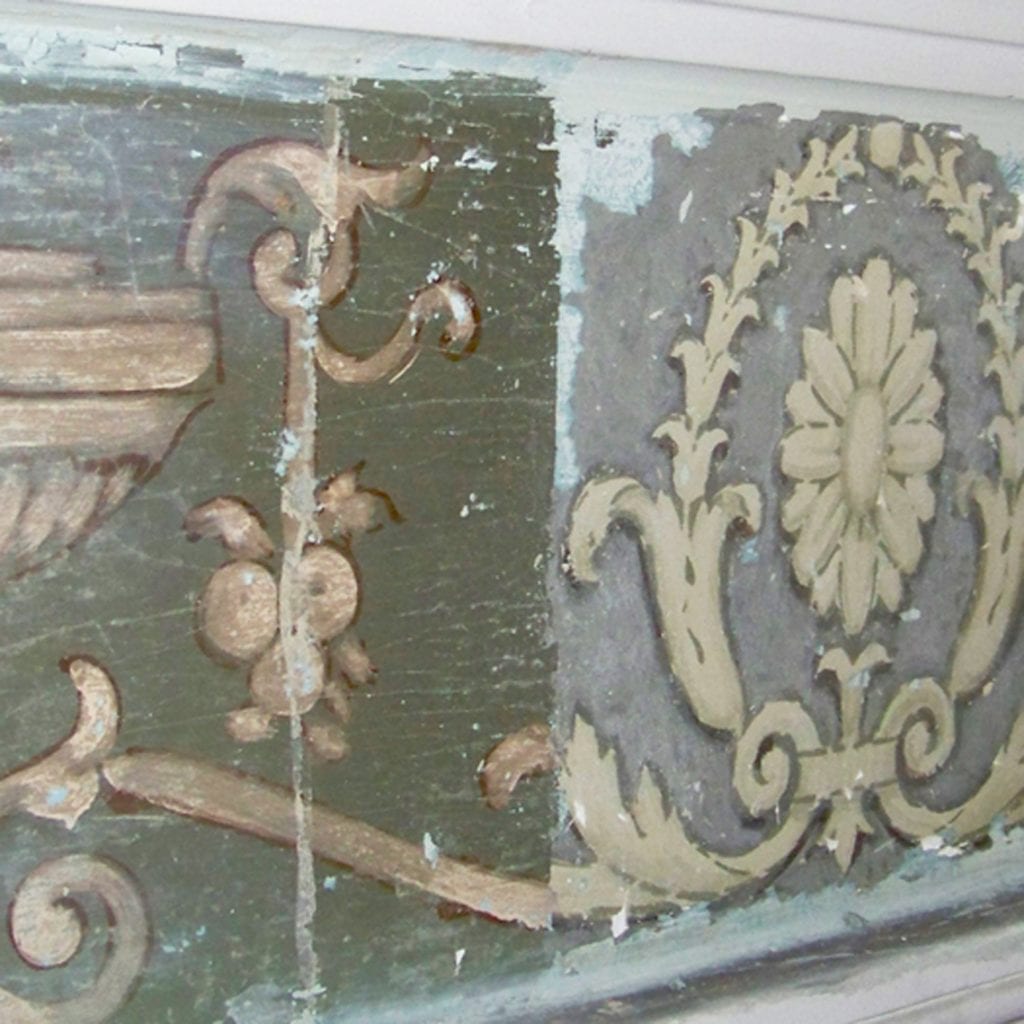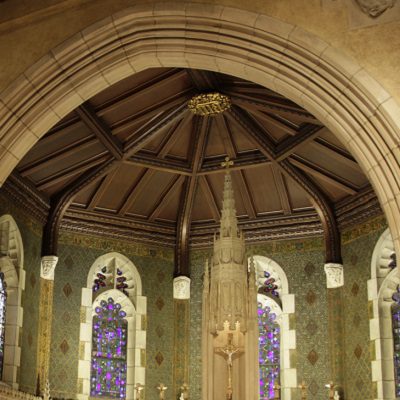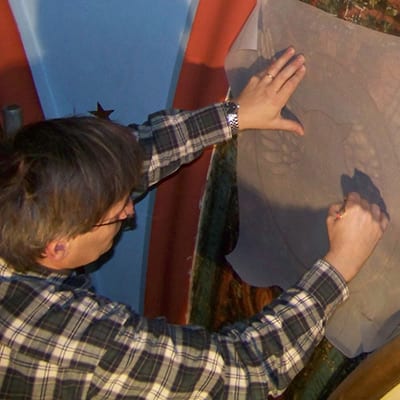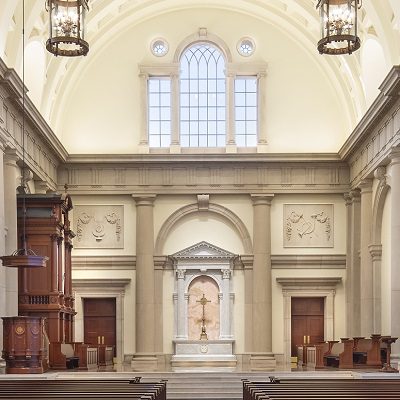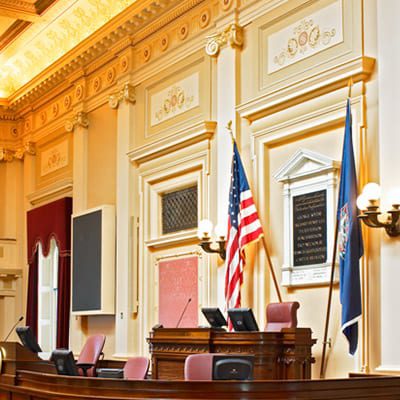Variables in the structure of historic churches and chapels such as materials and age will inform you how and where to focus your attention to best maintain or restore the building. Sensitivity to architectural detailed maintenance will lead to a healthy sense of community and respectful worship. These are 10 tips for maintaining and enhancing the overall beauty and stamina of a church or chapel.
1) Examine for Possible Water Leaks
Exposure to moisture for many materials is the number one cause for large, wide-spread damage. If a leakage is not prevented, restoration costs will rise exponentially. Water leaks can cause issues to plaster and other components. It is important to check up on windows and possible cracks throughout the building to make sure they are properly sealed from rain and harsh weather. Checking the attic for leaks from the roof is very important, especially since it could cause issues with plaster ceilings and be a potential safety issue. Attic visits should be scheduled at least a few times throughout a year.
2) Preserving Stone Interior Walls and Flooring
The level of maintenance required for stone depends on the porosity of the material. Granite rock has little to no porosity and can therefore keep out oils and salt which would corrode the surface. Sedimentary rock and brick however are more vulnerable and need consistent cleaning and treatment. Stone flooring is usually durable and self-sustaining if it is cleaned. However, any issues that occur will most likely need professional care. Issues such as cracks and discoloration require the stone to be ground down and re-varnished with wax or a sealer. Besides floors its common to find walls, columns, statues, or other features made of stone or marble in a church or chapel. Often from age or other external elements these features will require a conservation cleaning to maintain the original appearance and color. These features may also need repairing of chips or cracks. All these treatments are difficult to do on one’s own, so it is best to call in support of a specialist. Once a professional has performed conservation cleaning and repairs, they can provide a maintenance plan that a facilities manager can implement to help preserve the lasting beauty.

Conservation cleaning in progress of the marble sculptures at St. Patrick’s Parish in Lowell, Massachusetts
3) Preserving Wood Interior Walls & Features
For wooden walls or features, it is necessary to do monthly check-ups to make sure the wood is not drying out, decaying, warping, splitting, fading or other damage is occurring. This is especially the case with older wood in historic churches and chapels. Wood is an organic material, susceptible to a variety of damage. Restoring and repairing historic wooden elements and structures back to their previous glory need special attention and care. If this is something you are going to tackle internally, make sure you understand what needs to be done. From gentle but thorough cleaning to the application of compatible (but reversible) coatings and finishes to repair and even full replication of components is usually best done by highly skilled crafts people. When trying to tackle yourself, the easiest way to tell if wood needs maintenance is to feel whether it is dry. If there is no serious decay but it needs attention, then you can clean and varnish it yourself with tung or linseed oil. When varnishing wood, it is necessary to first remove all dust from the surfaces. The area being varnished must be sanded as well to remove any previous coats. It is important to keep the interior of the building at a moderate temperature with little humidity to avoid any blemishes forming while the finish dries. When these prerequisites are complete, it is then time to start laying on thin layers of varnish. If the coats are too thick, then there will be uneven drying, so it is better to lay down multiple thin layers than applying one.

Wood cleaning test patch in St. Mary’s Chapel at Boston College
4) Preserving Wood Flooring
Maintaining wood floors in a historic church is arguably the most difficult task. Whether it is the constant foot traffic, or debris being tracked into the building, an old wood floor is vulnerable and can be greatly affected by the smallest abrasion. There are more common tactics to combat these issues like using floor mats to avoid unnecessary moisture on shoes and consistently vacuuming. No matter how diligent you are with these methods however, an old wood floor will inevitably need special treatment. Every other year it is necessary to both buffer and re-coat the floor with polyurethane. Buffering smaller wooden fixtures such as pews and tables can be done by hand-sanding. Buffering a floor however, especially of a historic church, requires a sanding screen and machine. These machines can be used by non-professionals and sanding the floor is relatively simple. Once the floor is buffed, polyurethane, a protective finish, can be laid down in a thin layer to save the floor from minor blemishes such as dents from high heels or chair legs. This method can be done without needing professional assistance and can make your floor’s lifespan increase dramatically.
5) Analyze the Roof of the Church
The main way to sustain a church’s roof is to keep it dry. Having a strict cleaning schedule will prevent still water forming on the roof which causes molding and decay. A roof will need different amounts of care seasonally. In the winter and fall months it requires more maintenance due to snow and wet leaves which could cause rot. To make sure the roof stays dry, it is necessary to eliminate objects around the building which could block the sun. Wood roof sheathing which is common in historic buildings needs unique care to keep its structural integrity. You can check the condition of the roof by going into the attic and looking for moisture. If there is moisture, then you either have a ventilation issue or there is ice forming on the roof which is melting into the sheaths. Installing a ventilator in the attic provides an easier and cheaper method to restoring the roof itself then would bringing in a contractor and, if done quick enough, can prevent mold. Similarly, consistent roof care during the winter months can prevent ice from forming on the exterior of the roof. Roof leaks can lead to water damage of plaster or other elements so the proper maintenance can avoid this. Another feature common to a church or chapel is a dome. Domes, especially of sacred buildings, are often gilded in gold leaf. If this is the case for your church, it is important to monitor the condition of the dome so that when the gold leaf starts to peel, it can be replaced to not detract from the aesthetic of the church. Gilding is a specialty skill and needs to be implemented by professional hands.
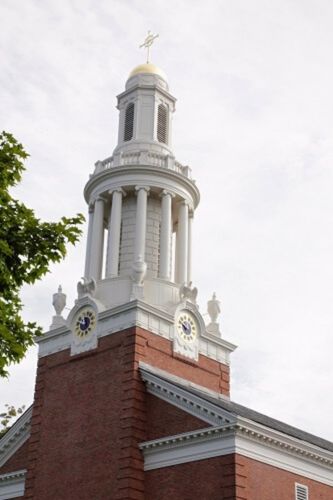
Architectural exterior gilding of the dome on the Yale Divinity School Quadrangle Chapel at Yale University
6) Everything Plaster
Ornamental plaster is common in historic interiors. While able to add beauty to the building, can also detract from the aesthetic if left uncared for. Major contributors to the deterioration and eventual cracks in the material are the excess of moisture and heat inside the building. The first step to maintaining the elegance of ornamental plaster is keeping a dehumidifier inside the church as well as maintaining consistent air conditioning. Ornamental plaster, once cracked, needs to be removed and replaced which requires professional help. Cracked flat plaster walls can be preserved and restored more easily and without outside assistance. Cracks can be filled in with siliconized latex and peeling plaster can be re-applied with special screws. Often in historic buildings there will be laths from which the plaster is hanging. If there are cracks or crevices in the flat plaster which cannot be masked with siliconized latex, then it is necessary to replace the laths in the problematic area which requires a restoration team. Cracking flat plaster ceilings pose a safety issue and need to be treated professionally as well. The underlying issues need to be assessed and address appropriately.
Wood lath & plaster ceilings function as a suspended system. In the construction of the ceiling, a wooden board or towel is used to force the wet plaster through the gaps between strips of lath, so that the plaster “slumps” over the back of the lath to form a “key & lug.” This acts as a hook to hold the ceiling in suspension. The security of this suspended system depends on the integrity of the plaster keys & lugs. John Canning & Co. is one of the few companies to use Historic Plaster Conservation Services (HPCS) which allows for an efficient and successful consolidation process when it comes to these situations. John Canning & Co. will conduct all services from a plaster conditions survey to ornamental and flat plaster restoration, repair and re-application as well consolidation and stabilization.
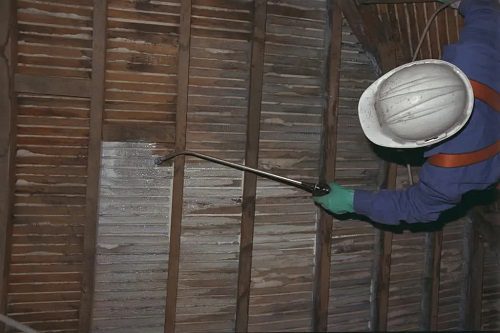
Historic plaster conservation on wood lath in progress
7) Decorative Painting and Artwork Maintenance
Decorative painting, artwork and murals are common in historic churches and chapels. Over time, the paint encounters issues including flaking, delaminating, staining, efflorescence or water damage. The original design might also get covered by layers of paint to refresh the image or decoration, however, the beauty of the mural or décor is gradually diminished. It is necessary to maintain the intended design and historic significance; therefore, important to unearth the original work which was painted when the church was built or period of greatest significance. No matter the issue, the restoration/conservation is a multi-step process which requires first, a conditions assessment and an investigation of the Church’s original intended design of the mural or decoration in question. Depending on the condition, varnish removal, paint stabilization or consolidation as well as inpainting and infilling may be required. The assessment will also determine whether the integrity of the underlying structure has been undermined and whether that is something that needs to be addressed.
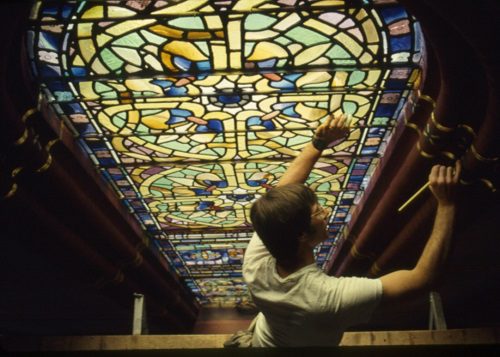
Historic paint restoration in progress in Battell Chapel at Yale University
8) Interior Gilding
Interior gilding is common in historic churches and chapels. Whether the gilding highlights the architecture, woodwork, decoration, framing etc., gold elevates the over-all appearance of the building. However, when left uncared for, the gold leaves can peel and fade, making it necessary to call in professional service for replication. There are proper maintenance habits which one can employ to avoid such issues. Cleaning the gilded surface with a dry and non-abrasive towel is key to keeping the gold leaf whole and bright. Abrasions are one of the most common issues with gilding, so it is important to keep the gold away from possible contact. If the object is water gilded, it is imperative that no moisture comes in contact with the surface because the leaves are easily rubbed off when moist. If there are issues with ceiling gilding or if gold leaf starts to peel, then it is necessary to seek help as the building may have substrate related issues or simply require repair due to old age.
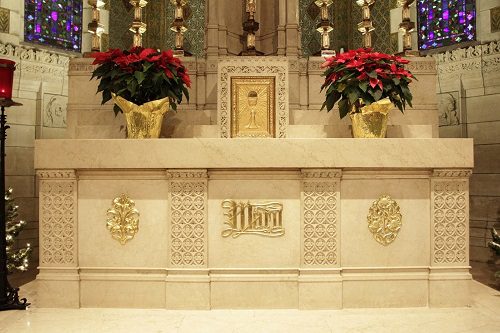
Interior gilding on the alter in St. Mary’s Chapel at Boston College
9) Helpful General Maintenance and Safety Tips
Besides taking steps in response to specific issues in a church, it is also important to observe proper upkeep in more general terms like cleaning and consistent check-ups. The best mode of managing facilities is to prevent an issue from taking place rather than dealing with it once it does. You can prevent most common structural and decorative issues through monthly monitoring and regular maintenance. This can also prevent safety issues from forming such as loose ceiling plaster or an unstable roof. Although maintaining the beauty of a church is crucial to a proper liturgy, keeping the church attendants safe is the greatest priority for a facilities manager. The key things to remember when it comes to maintaining any historic building is that the process involves periodic checkups and assessments as well as proper upkeep. Routine cleanings, regular walkthroughs/inspections, historic building assessments and stabilizing potential issues are all important when it comes to maintenance and preventing deterioration of the historic fabric.
10) When to Call in Professional Help
There is a point where professional help is necessary to the restoration and preservation of any historic building. But if there is any doubt it is also good to bring in a professional to help in guiding you through the process. A professional can provide maintenance recommendations as well as guide you through any possible restorations that may be needed. Some examples of historic Church and Chapel needs which require professional service include wood restoration, plaster conservation, decorative paint & finishes restoration, and mural, stone, and gilding restoration. More extensive issues such as the ones above need professional and experienced care. For guidance on getting a fair quote, contact us or request a consultation to be connected with one of our knowledgeable staff members.

